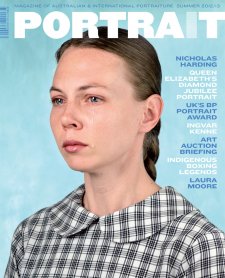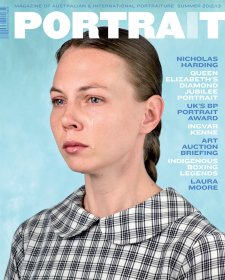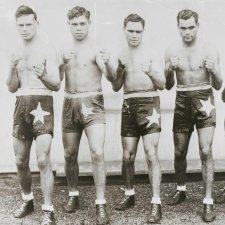We gaze upon faces all the time: in the flesh, on film, in print and on TV, in a constant traffic of psychological engagement. This can lead to sensory overload; caught in the crush of the crowd. The portrait returns us to a conversational intimacy.
Inspired as a teenager by the caricatures of Gerald Scarfe, Wally Fawkes (Trog), Benier and Bruce Petty, I drew caricatures of my classmates and all the school’s teachers, discovering I could capture a likeness from life and memory. At home, many art books were full of drawn and painted images of people to look at and copy – those of Van Gogh and Da Vinci particularly caught my attention.
This has become an enduring fascination, drawing and painting people. Not only people I know, family and friends, but also people I’d like to know and asking them to ‘sit’ for a portrait is a good way to meet them. What attracts me to them is their approach to living and a passion for what they do. Through the ‘getting to know you’ of the portrait process I hope to be influenced in some way. A person’s celebrity is worthless to me as a painter, the idiosyncratic is what is truly compelling and worthy of contemplation.
During observation the persistence of vision and of memory are in play. For me the transformation of the empirical in painting is as much to do with what is actually seen and felt as the ensuing memory of it. When I’m drawing and painting a person I’m not only grappling with the technical difficulties of translating the three dimensional to a two dimensional equivalent but also attempting to find something authentic, dispelling preconceived notions of what my understanding of the person may have been.
I often place the person in their environment, which gives a context for the portrait and enlarges upon themes of character. Recently I have also begun to paint people in my studio to further focus on the immediacy of painting from the figure. I rarely finish a work with the person present. The ‘from life’ sessions with them fill the memory with both the work itself, which is replete with successes and failures, and also a store of visual and emotional information. When the sitter has left, these memories assist a transmutation of the image in an endeavour to reinstate their attendance and so create an enduring sense of a particular human presence.














